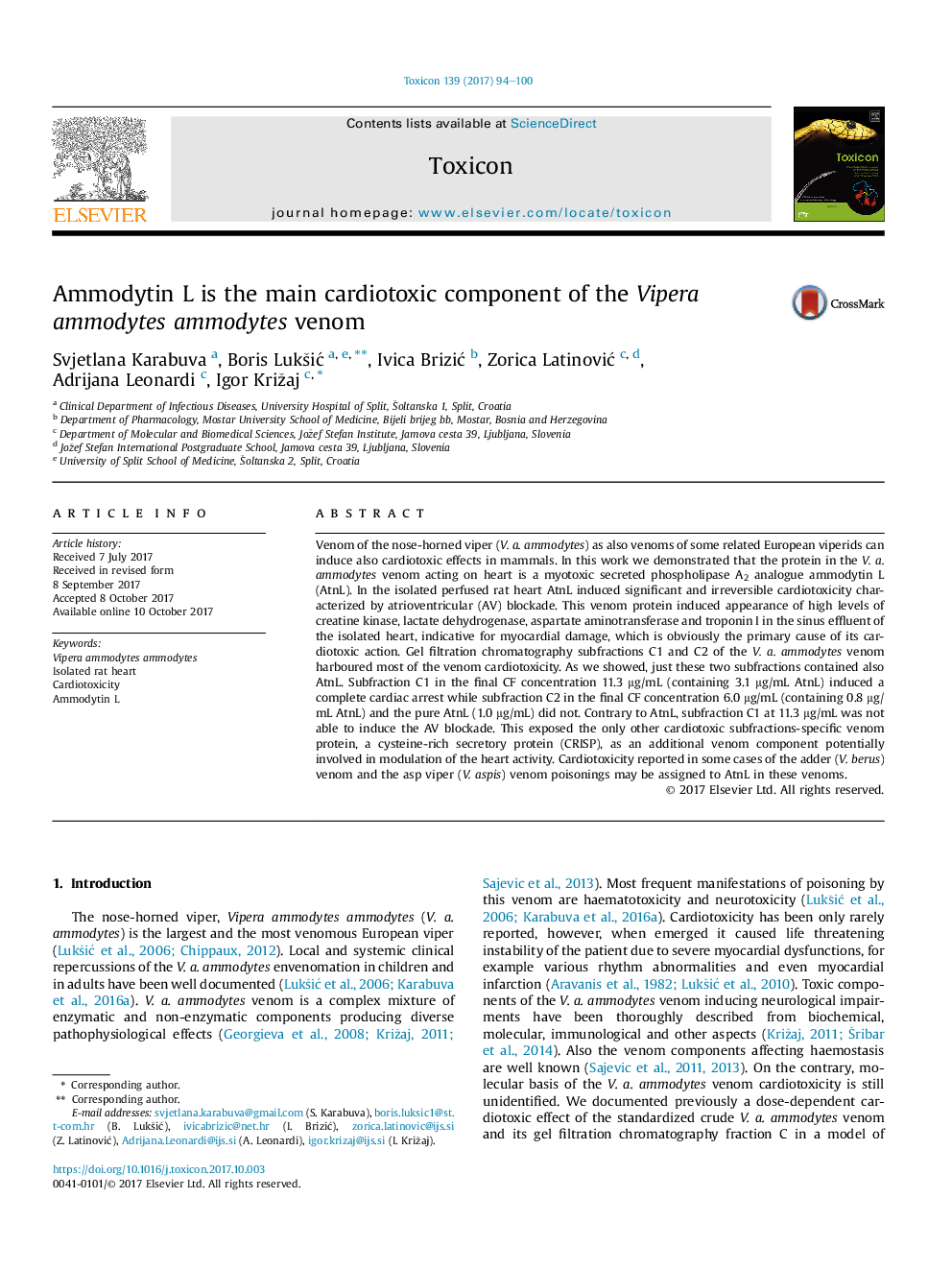| کد مقاله | کد نشریه | سال انتشار | مقاله انگلیسی | نسخه تمام متن |
|---|---|---|---|---|
| 5519192 | 1544097 | 2017 | 7 صفحه PDF | دانلود رایگان |

- V. a. ammodytes venom can induce serious cardiotoxic effects in man.
- Cardiotoxicity of the V. a. ammodytes venom is associated with injury of the heart.
- The main cardiotoxin of the V. a. ammodytes venom is a myotoxic AtnL.
- Cardiotoxicity of AtnL is most likely the consequence of its myotoxicity.
- CRISP molecule may participate at cardiotoxicity of the V. a. ammodytes venom.
Venom of the nose-horned viper (V. a. ammodytes) as also venoms of some related European viperids can induce also cardiotoxic effects in mammals. In this work we demonstrated that the protein in the V. a. ammodytes venom acting on heart is a myotoxic secreted phospholipase A2 analogue ammodytin L (AtnL). In the isolated perfused rat heart AtnL induced significant and irreversible cardiotoxicity characterized by atrioventricular (AV) blockade. This venom protein induced appearance of high levels of creatine kinase, lactate dehydrogenase, aspartate aminotransferase and troponin I in the sinus effluent of the isolated heart, indicative for myocardial damage, which is obviously the primary cause of its cardiotoxic action. Gel filtration chromatography subfractions C1 and C2 of the V. a. ammodytes venom harboured most of the venom cardiotoxicity. As we showed, just these two subfractions contained also AtnL. Subfraction C1 in the final CF concentration 11.3 μg/mL (containing 3.1 μg/mL AtnL) induced a complete cardiac arrest while subfraction C2 in the final CF concentration 6.0 μg/mL (containing 0.8 μg/mL AtnL) and the pure AtnL (1.0 μg/mL) did not. Contrary to AtnL, subfraction C1 at 11.3 μg/mL was not able to induce the AV blockade. This exposed the only other cardiotoxic subfractions-specific venom protein, a cysteine-rich secretory protein (CRISP), as an additional venom component potentially involved in modulation of the heart activity. Cardiotoxicity reported in some cases of the adder (V. berus) venom and the asp viper (V. aspis) venom poisonings may be assigned to AtnL in these venoms.
Journal: Toxicon - Volume 139, 1 December 2017, Pages 94-100